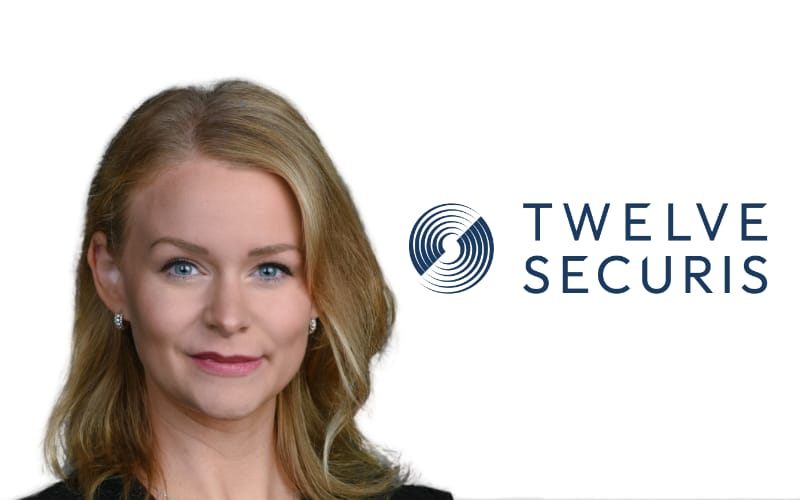As the catastrophe bond market continues to expand, the next phase of growth won’t come from standardization alone. Digitization, streamlining data and deal flow, will be crucial for handling scale while preserving sponsor flexibility, according to Tanja Wrosch, Head of Cat Bond Portfolio Management at Twelve Securis. Twelve Securis was formed in February this year, following the completion of the merger of established insurance-linked securities (ILS) manager specialists Twelve Capital and Securis Investment Partners.
Twelve Securis was formed in February this year, following the completion of the merger of established insurance-linked securities (ILS) manager specialists Twelve Capital and Securis Investment Partners.
The ILS investment manager specialises in cat bonds, investing in both public and bespoke private ILS deals. Its strategies range from liquid UCITS-style funds to tailored institutional mandates.
With the catastrophe bond market continuing to expand at a rapid pace, we spoke with Wrosch about the challenges that lie ahead for the space, such as how the market should respond as the sponsor base grows, issuance rates rise, and the maturity burden increases?
“Indeed, we believe demand is strong. Current capacity appears more than sufficient to meet new issuance, with appetite continuing to grow. Evidence of this is the soft close of our flagship Cat Bond strategy. As a manager with an institutional-grade investment setup, congestion is less of a concern for us. Increased activity and liquidity clearly pave the way for the market to grow both in size and relevance, and we as managers should be prepared to welcome that,” Wrosch explained.
“Market participants often cite the need for more standardization related to this. While standardization would certainly be helpful, it is important to recognize that sponsors require flexibility to tailor deals to their own needs—pure standardization has its limits in this market.
“Instead, we emphasize further digitization. Simply digitizing more data throughout deal flow and the lifecycle of transactions can already streamline processes and improve efficiency.”
Next, we then discussed with Wrosch the key considerations investors should keep in mind when deploying capital into the ILS market and assessing different managers
“For investors in cat bonds, understanding and managing risk with sophistication is more important than ever. Larger managers with institutional-grade setups typically offer a significant advantage here, employing multi-model frameworks, continuously validating model outputs, and integrating the latest academic research to form a robust view of risk. This comprehensive approach is key to navigating today’s complex and expanding market,” Wrosch said.
However, Wrosch goes on to note that as market activity and issuance volumes grow, scalability also becomes crucial too.
“Managers must have the operational capacity to handle increased deal flow and maintain discipline amidst what some describe as market ‘congestion.’
“We also see considerable value in independent managers who prioritize end-investor performance and client service. Their focus tends to be aligned closely with delivering consistent returns without conflicts of interest that may arise when managers also originate or retain underwriting risk themselves,” she said.
Moving forward, we then asked Wrosch to outline what she sees as the key challenges currently confronting the global ILS market today.
“As the market grows and cat bond issuance breaks records, remaining disciplined is more important than ever. Regulatory clarity, particularly around ESMA’s recent UCITS guidance, is a significant challenge facing European investors and managers.
“Another key risk is the influx of short-term investors drawn by high cat bond yields and apparent non-correlation—these capital flows can be quick to reverse when broader markets stabilize or yields elsewhere rise. In the near term, that could lead to imbalances and volatility in capital supply. Generally, providing consistency while welcoming innovation is the challenge,” she explained.
All in all, Wrosch stated that the health of the cat bond market today is “very solid”, driven by annual issuance and market size reaching new records, with continued growth and a surge in new cedents also entering the space.
“Furthermore, there seems to be a sense of consensus within the market to keep strengthening operational infrastructure, which is vital as activity ramps up. All in all, this combination of growth, diversification, and industry-wide focus on efficiency points to a robust and sustainable cat bond sector within the ILS space,” Wrosch said.
Additionally, Wrosch also outlined her expectations for investor sentiment within the cat bond market as the industry begins to move towards year-end.
“Investors in cat bond funds generally do not expect – or should not expect – a repeat of the outsized returns seen in 2023, but they continue to value the solid yields and persistent low correlation that the asset class offers.
“So far, these expectations continue to be delivered, supporting positive sentiment. However, absent any major catastrophes, we might see some further spread tightening heading into year-end, unless new issuance continues to break records and sustains demand,” Wrosch explained.
Lastly, the discussion then turned towards the key January renewals, and we asked Wrosch whether she anticipates for discipline on key contract terms like attachment points to hold at 1.1, as well as how competitive pricing might end up being if catastrophe losses stay low during H2 2025.
“Looking ahead, we may observe further tightening of spreads in the Cat Bond market, especially if catastrophe losses remain light throughout H2. While this tightening may pressure absolute returns, discipline around key contract features should be maintained,” Wrosch explained.
“From an investor perspective cat bond spreads continue to exceed those of comparable high yield corporates, underscoring their value proposition as fixed income diversifiers with low correlation to financial markets.
“Not to forget, there is the benefit of the floating rate nature of catastrophe bonds, which provides natural protection against falling interest rates—a particularly relevant feature as central banks signal potential rate cuts. So despite some potential compression, the overall outlook remains positive for disciplined investors seeking diversification and yield uncorrelated with traditional assets,” Wrosch concluded.
Read all of our interviews with ILS market and reinsurance sector professionals here.



